Abstract
Antigen-specific T helper factor appears in the 24 hr supernatant of lymph node cells taken 4 days after immunization with contact sensitizer. The factor is assayed by its ability to augment the contact sensitivity response induced by haptenized spleen cells. In practice, picrylated or oxazolonated spleen cells are treated with the factor for 1 hr at 4 degrees and 4 x 10(6) cells are injected into the footpads of recipient mice. Contact sensitivity is assessed 5 days later. The factor first appears 3 days after immunization and its production depends on an Lyt-1+2-, I-A+, I-J- T cell. It is antigen-specific in its action in a criss-cross experiment, and can be absorbed with and eluted from haptenized beads. It bears I-A determinant(s) and the I-A determinant and the antigen binding site(s) occur on the same molecule. The molecular weight is around 60,000. The possible role of T helper factors in the activation of the antigen-presenting cell in the induction stage of the immune response is discussed.
Full text
PDF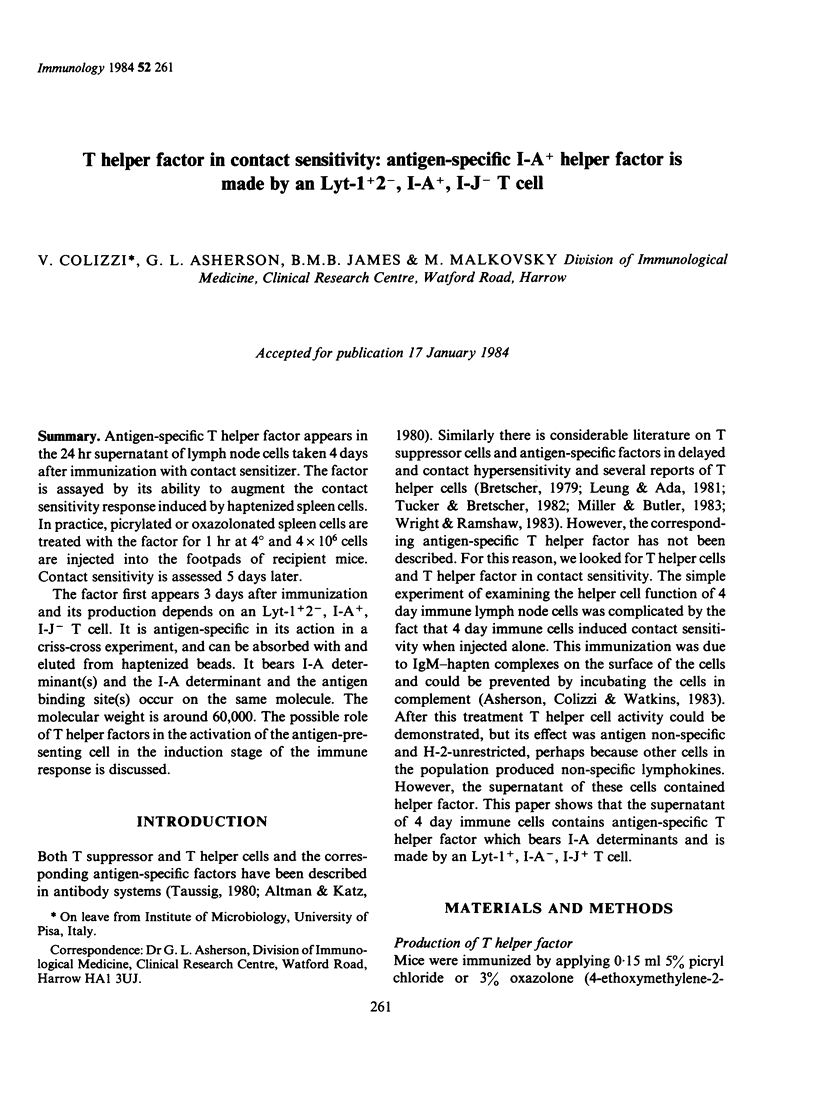
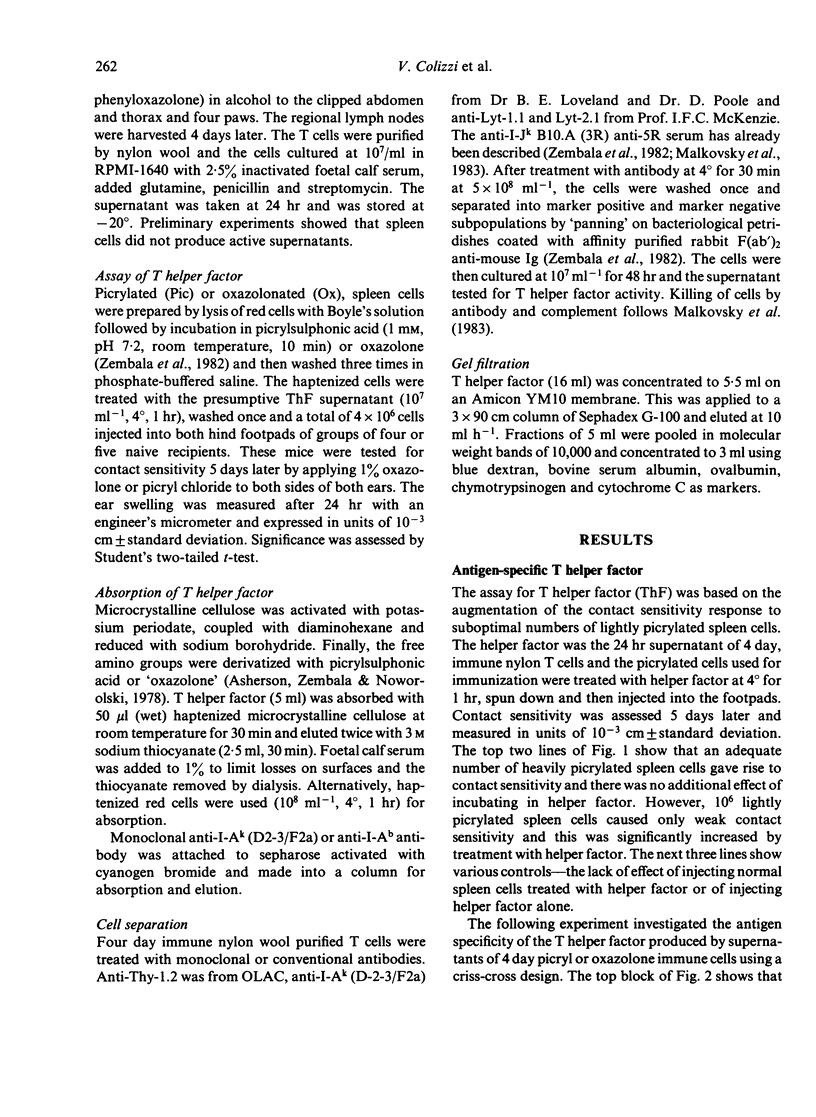
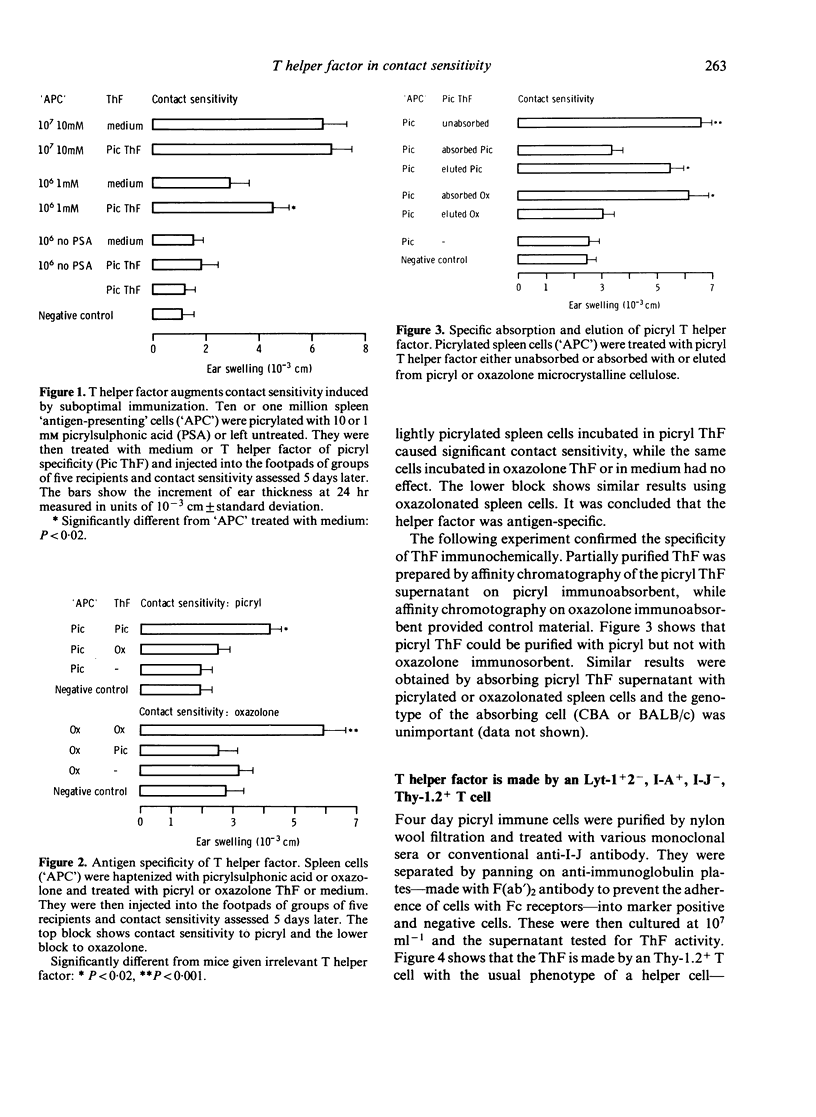
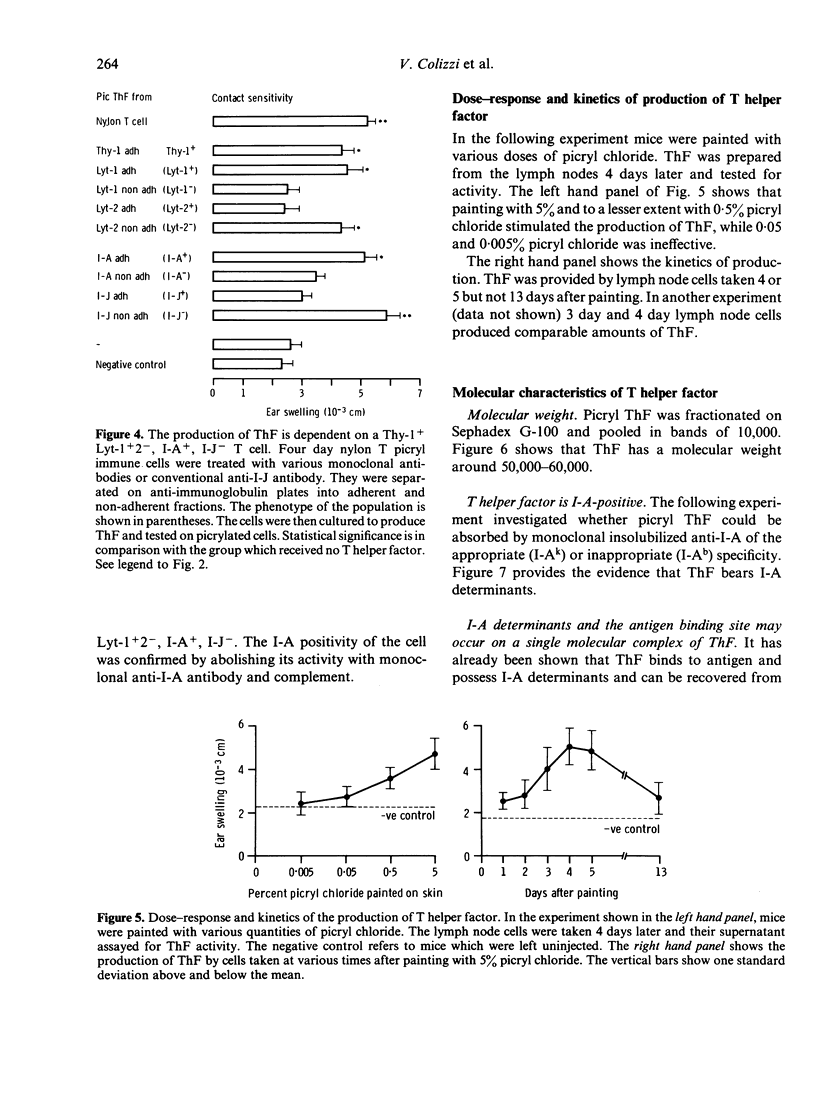
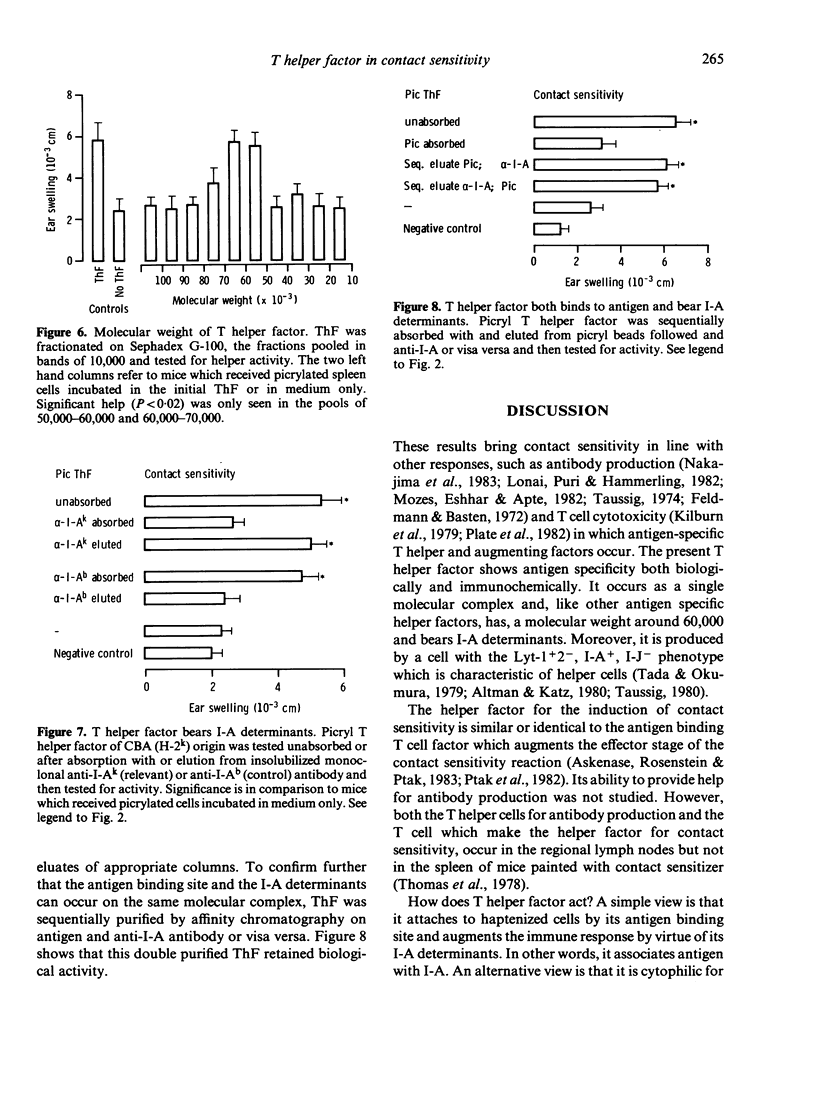
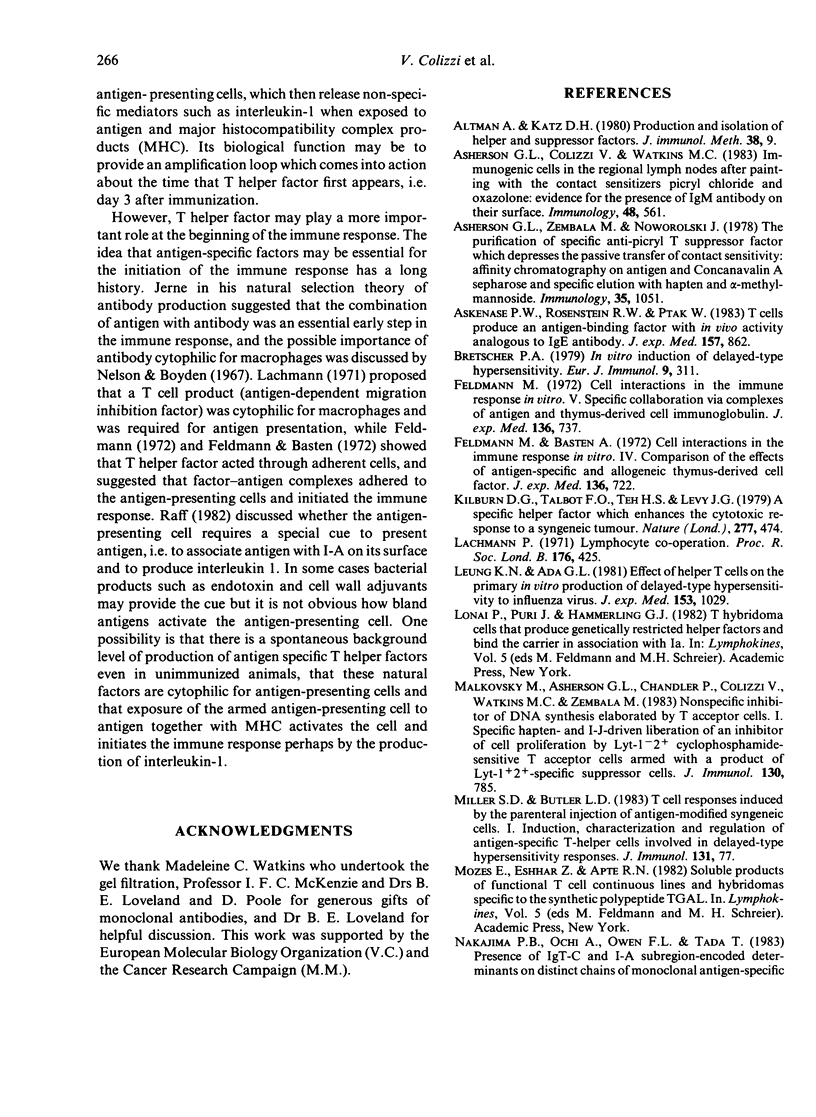
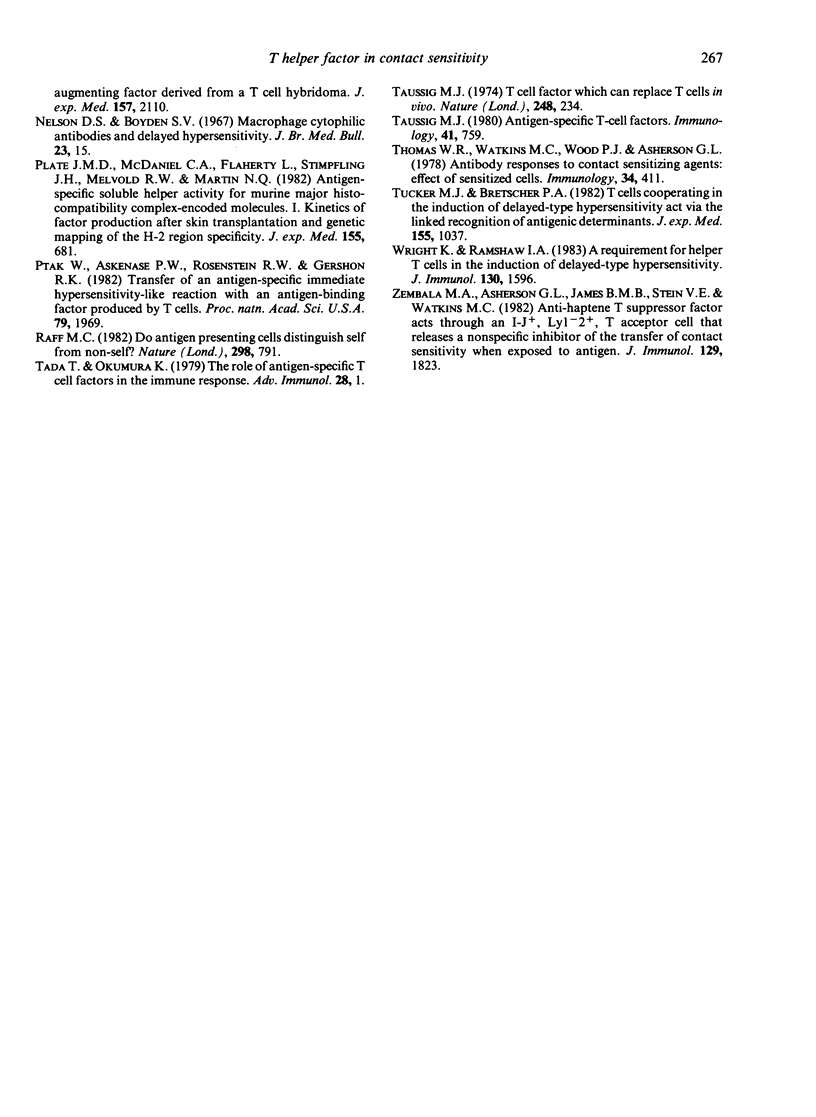
Selected References
These references are in PubMed. This may not be the complete list of references from this article.
- Altman A., Katz D. H. Production and isolation of helper and suppressor factors. J Immunol Methods. 1980;38(1-2):9–41. doi: 10.1016/0022-1759(80)90328-2. [DOI] [PubMed] [Google Scholar]
- Asherson G. L., Colizzi V., Watkins M. C. Immunogenic cells in the regional lymph nodes after painting with the contact sensitizers picryl chloride and oxazolone: evidence for the presence of IgM antibody on their surface. Immunology. 1983 Mar;48(3):561–569. [PMC free article] [PubMed] [Google Scholar]
- Asherson G. L., Zembala M., Noworolski J. The purification of specific anti-picryl T suppressor factor which depresses the passive transfer of contact sensitivity: affinity chromatography on antigen and Concanavalin A sepharose and specific elution with hapten and alpha-methylmannoside. Immunology. 1978 Dec;35(6):1051–1056. [PMC free article] [PubMed] [Google Scholar]
- Askenase P. W., Rosenstein R. W., Ptak W. T cells produce an antigen-binding factor with in vivo activity analogous to IgE antibody. J Exp Med. 1983 Mar 1;157(3):862–873. doi: 10.1084/jem.157.3.862. [DOI] [PMC free article] [PubMed] [Google Scholar]
- Bretscher P. A. In vitro induction of delayed-type hypersensitivity. Eur J Immunol. 1979 Apr;9(4):311–316. doi: 10.1002/eji.1830090412. [DOI] [PubMed] [Google Scholar]
- Feldmann M., Basten A. Cell interactions in the immune response in vitro. IV. Comparison of the effects of antigen-specific and allogeneic thymus-derived cell factors. J Exp Med. 1972 Oct 1;136(4):722–736. doi: 10.1084/jem.136.4.722. [DOI] [PMC free article] [PubMed] [Google Scholar]
- Feldmann M. Cell interactions in the immune response in vitro. V. Specific collaboration via complexes of antigen and thymus-derived cell immunoglobulin. J Exp Med. 1972 Oct 1;136(4):737–760. doi: 10.1084/jem.136.4.737. [DOI] [PMC free article] [PubMed] [Google Scholar]
- Kilburn D. G., Talbot F. O., Teh H. S., Levy J. G. A specific helper factor which enhances the cytotoxic response to a syngeneic tumour. Nature. 1979 Feb 8;277(5696):474–476. doi: 10.1038/277474a0. [DOI] [PubMed] [Google Scholar]
- Lachmann P. J. Lymphocyte cooperation. Proc R Soc Lond B Biol Sci. 1971 Jan 12;176(1045):425–426. doi: 10.1098/rspb.1971.0005. [DOI] [PubMed] [Google Scholar]
- Leung K. N., Ada G. L. Effect of helper T cells on the primary in vitro production of delayed-type hypersensitivity to influenza virus. J Exp Med. 1981 May 1;153(5):1029–1043. doi: 10.1084/jem.153.5.1029. [DOI] [PMC free article] [PubMed] [Google Scholar]
- Malkovský M., Asherson G. L., Chandler P., Colizzi V., Watkins M. C., Zembala M. Nonspecific inhibitor of DNA synthesis elaborated by T acceptor cells. I. Specific hapten- and I-J-driven liberation of an inhibitor of cell proliferation by Lyt-1-2+ cyclophosphamide-sensitive T acceptor cells armed with a product of Lyt-1+2+-specific suppressor cells. J Immunol. 1983 Feb;130(2):785–790. [PubMed] [Google Scholar]
- Miller S. D., Butler L. D. T cell responses induced by the parenteral injection of antigen-modified syngeneic cells. I. Induction, characterization, and regulation of antigen-specific T helper cells involved in delayed-type hypersensitivity responses. J Immunol. 1983 Jul;131(1):77–85. [PubMed] [Google Scholar]
- Nakajima P. B., Ochi A., Owen F. L., Tada T. Presence of IgT-C and I-A subregion-encoded determinants on distinct chains of monoclonal antigen-specific augmenting factor derived from a T cell hybridoma. J Exp Med. 1983 Jun 1;157(6):2110–2120. doi: 10.1084/jem.157.6.2110. [DOI] [PMC free article] [PubMed] [Google Scholar]
- Nelson D. S., Boyden S. V. Macrophage cytophilic antibodies and delayed hypersensitivity. Br Med Bull. 1967 Jan;23(1):15–20. doi: 10.1093/oxfordjournals.bmb.a070508. [DOI] [PubMed] [Google Scholar]
- Plate J. M., McDaniel C. A., Flaherty L., Stimpfling J. H., Melvold R. W., Martin N. Q. Antigen-specific soluble helper activity for murine major histocompatibility complex-encoded molecules. I. Kinetics of factor production after skin transplantation and genetic mapping of the H-2 region specificity. J Exp Med. 1982 Mar 1;155(3):681–697. doi: 10.1084/jem.155.3.681. [DOI] [PMC free article] [PubMed] [Google Scholar]
- Ptak W., Askenase P. W., Rosenstein R. W., Gershon R. K. Transfer of an antigen-specific immediate hypersensitivity-like reaction with an antigen-binding factor produced by T cells. Proc Natl Acad Sci U S A. 1982 Mar;79(6):1969–1973. doi: 10.1073/pnas.79.6.1969. [DOI] [PMC free article] [PubMed] [Google Scholar]
- Tada T., Okumura K. The role of antigen-specific T cell factors in the immune response. Adv Immunol. 1979;28:1–87. doi: 10.1016/s0065-2776(08)60799-3. [DOI] [PubMed] [Google Scholar]
- Taussig M. J. Antigen-specific T-cell factors. Immunology. 1980 Dec;41(4):759–787. doi: 10.1007/BF00199524. [DOI] [PMC free article] [PubMed] [Google Scholar]
- Taussig M. J. T cell factor which can replace T cells in vivo. Nature. 1974 Mar 15;248(445):234–236. doi: 10.1038/248234a0. [DOI] [PubMed] [Google Scholar]
- Thomas W. R., Watkins M. C., Wood P. J., Asherson G. L. Antibody responses to contact sensitizing agents. Effect of sensitized cells. Immunology. 1978 Mar;34(3):411–417. [PMC free article] [PubMed] [Google Scholar]
- Tucker M. J., Bretscher P. A. T cells cooperating in the induction of delayed-type hypersensitivity act via the linked recognition of antigenic determinants. J Exp Med. 1982 Apr 1;155(4):1037–1049. doi: 10.1084/jem.155.4.1037. [DOI] [PMC free article] [PubMed] [Google Scholar]
- Wright K., Ramshaw I. A. A requirement for helper T cells in the induction of delayed-type hypersensitivity. J Immunol. 1983 Apr;130(4):1596–1599. [PubMed] [Google Scholar]
- Zembala M. A., Asherson G. L., James B. M., Stein V. E., Watkins M. C. Anti-haptene T suppressor factor acts through an I-J+, Ly1-2+, T acceptor cell that releases a nonspecific inhibitor of the transfer of contact sensitivity when exposed to antigen. J Immunol. 1982 Nov;129(5):1823–1829. [PubMed] [Google Scholar]


